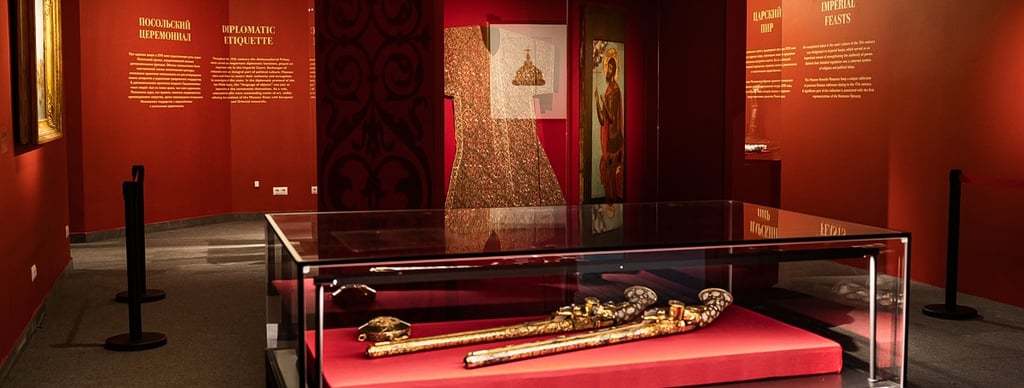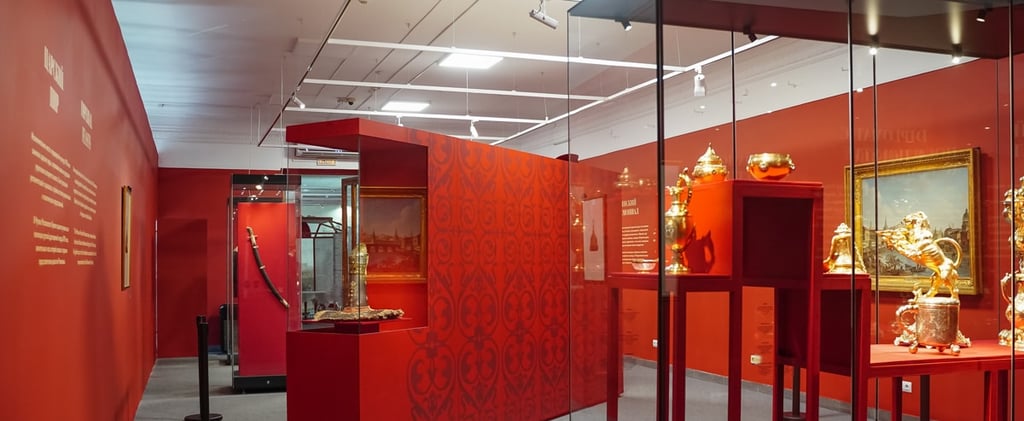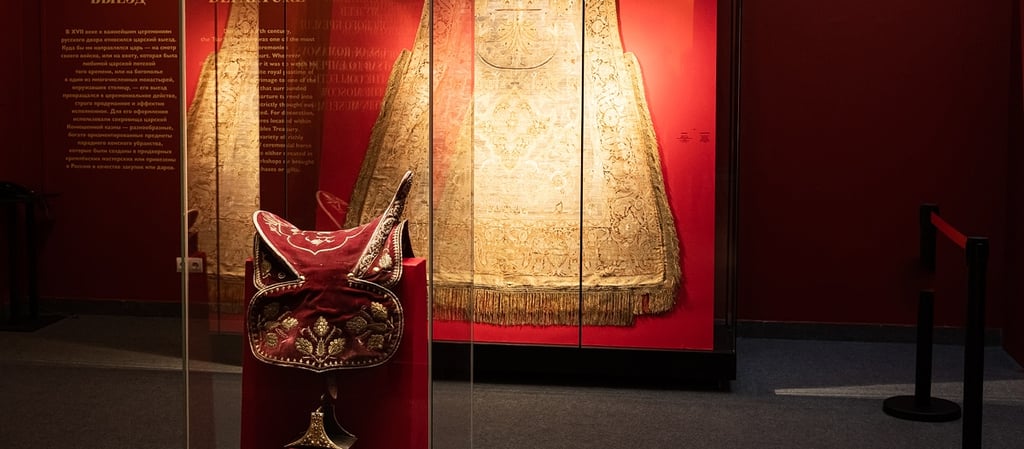Arseniev Museum of Primorsky Region: The Deep Memory of the Far East
From ancient artifacts to natural wonders, this museum weaves the rich tapestry of Primorye’s indigenous cultures, explorers, and unique ecosystems.


A Gateway to the Edge of Russia
In Vladivostok, the city of ships and slopes, where taiga forests meet Pacific waves and the winds carry the scent of sea and pine, there stands a building that holds the deep memory of the Russian Far East.
This is the Arseniev Museum of Primorsky Region — an institution where history, nature, and culture converge into a living portrait of one of the world’s most complex and fascinating frontiers.
Step through its doors, and you enter a space where Siberian tigers stalk dioramas of dense forest, where Buddhist icons and Orthodox crosses stand side by side, where the voices of indigenous peoples, explorers, migrants, and dreamers echo through time.
In the Arseniev Museum, the Far East is not a distant province, but a world unto itself — vibrant, layered, and endlessly surprising.
The Legacy of Vladimir Arseniev
The museum bears the name of Vladimir Klavdievich Arseniev (1872–1930), the great explorer, ethnographer, and writer whose journeys through the Primorsky and Khabarovsk territories illuminated the land’s natural wonders and cultural diversity.
Arseniev’s seminal work, Dersu Uzala, immortalized his friendship with a Nanai hunter and offered a vision of the Far East as a place where human life and nature are deeply intertwined.
Fittingly, the museum that honors his legacy continues this vision: its collections embrace not only the history of Russian settlement, but the rich and enduring traditions of the region’s indigenous peoples, as well as its extraordinary biodiversity.
A Museum Born of Curiosity
The Arseniev Museum was founded in 1890, making it one of the oldest cultural institutions in the Russian Far East. Its origins lie in the efforts of local scholars and enthusiasts who sought to document and share knowledge of a land still largely unknown to European Russia.
Over the decades, the museum’s collections expanded through the contributions of explorers, scientists, traders, and ordinary citizens. In 1945, it was renamed in honor of Arseniev, whose work had done so much to shape both scientific understanding and popular imagination of the region.
Today, the museum occupies a handsome neo-Renaissance building in central Vladivostok, its red brick façade a landmark of the city’s architectural heritage.
The Natural World of Primorye
One of the museum’s greatest treasures is its exploration of the natural world — a world of astonishing richness and contrast.
Primorye lies at the meeting point of taiga and subtropical forest, mountain and sea. Its landscapes harbor a stunning array of species, many found nowhere else in Russia.
Within the museum, immersive exhibits evoke this world:
The silent gaze of the Amur tiger, apex predator of the forest.
The shimmering wings of rare butterflies.
The delicate skeletons of marine life from the Sea of Japan.
Dioramas that recreate the seasonal life of the Primorye taiga — green and teeming in summer, silent and snowbound in winter.
Through these exhibits, visitors come to understand that the Far East is not only a place of human stories, but a realm where nature’s drama unfolds with majestic power.
Peoples of the Land
Equally compelling is the museum’s portrayal of the indigenous peoples of Primorye: the Nanai, Udege, Oroch, and Evenk, among others, whose deep knowledge of the land shaped ways of life attuned to its rhythms.
The exhibits honor their traditions with sensitivity and respect. One moves through displays of birchbark canoes, ceremonial clothing, hunting tools, and spiritual artifacts that speak of a profound relationship with forest and river.
Arseniev’s own writings, displayed in manuscripts and quotations, underscore this relationship — reminding visitors that these cultures, too often marginalized, hold wisdom vital to understanding and preserving the region’s fragile ecosystems.
In this part of the museum, the past is not static; the living voices of indigenous communities continue to shape the evolving story of the Russian Far East.
Practical Information
Location
Arseniev Museum of Primorsky Region
Svetlanskaya Street, 20
Vladivostok, Russia
Located in the heart of Vladivostok, on Svetlanskaya Street, the museum is easily accessible by foot from the city’s main squares, railway station, and port area.
Opening Hours
Tuesday to Sunday: 10:00 – 18:00
Closed on Mondays and certain public holidays.
Admission
General admission: modest fee.
Discounts for children, students, pensioners.
Family tickets and group tours available.
Special exhibitions and events may have separate pricing.
Getting There
By foot: The museum is located in the central pedestrian-friendly part of Vladivostok.
By public transport: Numerous bus and tram routes stop along Svetlanskaya Street.
By car: Paid parking is available nearby.
Facilities and Services
Permanent and temporary exhibition halls.
Multimedia displays and interactive exhibits for younger visitors.
Gift shop with books, local crafts, and educational materials.
Café with light refreshments.
Audio guides available in Russian and English.
Guided tours in Russian; English-speaking guides can be arranged in advance.
Wheelchair accessible in main galleries; inquire for specific needs.
Events and Programs
The museum regularly hosts lectures, film screenings, educational workshops, and special exhibitions focused on themes of nature, culture, and history.
Events celebrating indigenous heritage and regional folklore are an important part of its community programming.
Official Website
https://arseniev.org
(Available in Russian; English version under development.)


The Story of Settlement
The Arseniev Museum also tells the complex story of Russian settlement in the Far East — a process that unfolded in waves, bringing with it both opportunity and conflict.
Through detailed exhibits, visitors trace the arrival of Cossack explorers, traders, soldiers, and peasants, whose journeys eastward shaped the human geography of Primorye.
Artifacts of daily life — samovars, icon corners, tools, and fabrics — evoke the hardships and hopes of those who sought new beginnings in this remote land.
The museum also explores the dynamic interactions between settlers and indigenous peoples, between Russian Orthodox and Buddhist cultures, between the traditions of the steppe and the maritime world.
In these galleries, one sees how the Russian Far East became a cultural mosaic, marked by both convergence and tension, continuity and change.
Vladivostok: A Port of Many Worlds
Another section of the museum brings to life the story of Vladivostok itself — a city born of empire and trade, shaped by its cosmopolitan identity.
Through maps, photographs, and personal artifacts, one glimpses Vladivostok’s evolution from military outpost to thriving Pacific port.
The city’s early decades saw the arrival of Koreans, Chinese, Japanese, Europeans, and Americans, whose presence left lasting marks on its architecture, cuisine, and social fabric.
The museum does not shy away from the city’s tumultuous 20th century — its role in the Russian Civil War, the Soviet period of restricted access, and its reopening as a global city in the post-Soviet era.
Here, one comes to understand Vladivostok as not merely a Russian city, but a Pacific crossroads, where Asia and Europe meet on the edge of the taiga and sea.
The Visitor’s Experience
To visit the Arseniev Museum is to journey through multiple dimensions of the Far East — natural, cultural, historical.
The museum’s design encourages slow exploration. One moves from the dense beauty of taiga exhibits to the intimate spaces of indigenous life, from the material culture of Russian settlers to the vibrant cosmopolitan energy of old Vladivostok.
Throughout, the spirit of Vladimir Arseniev presides gently — his notebooks, photographs, and beloved words reminding us that this vast and often harsh land is also a place of deep connection between people and nature.
The museum’s exhibits are not static relics; they invite reflection on the ongoing challenges facing Primorye: environmental protection, cultural preservation, and the search for sustainable futures in a rapidly changing world.




